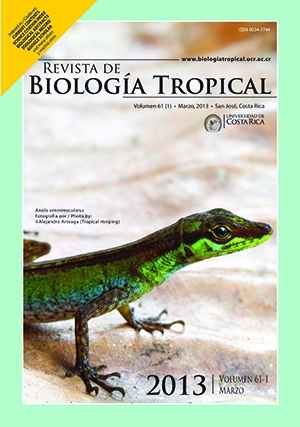Abstract
The development of efficient sampling protocols is an essential prerequisite to evaluate and identify priority conservation areas. There are few protocols for fauna inventory and monitoring in wide geographical scales for the tropics, where the complexity of communities and high biodiversity levels, make the implementation of efficient protocols more difficult. We proposed here a simple strategy to optimize the capture of dung beetles, applied to sampling with baited traps and generalizable to other sampling methods. We analyzed data from eight transects sampled between 2006-2008 with the aim to develop an uniform sampling design, that allows to confidently estimate species richness, abundance and composition at wide geographical scales. We examined four characteristics of any sampling design that affect the effectiveness of the sampling effort: the number of traps, sampling duration, type and proportion of bait, and spatial arrangement of the traps along transects. We used species accumulation curves, rank-abundance plots, indicator species analysis, and multivariate correlograms. We captured 40 337 individuals (115 species/morphospecies of 23 genera). Most species were attracted by both dung and carrion, but two thirds had greater relative abundance in traps baited with human dung. Different aspects of the sampling design influenced each diversity attribute in different ways. To obtain reliable richness estimates, the number of traps was the most important aspect. Accurate abundance estimates were obtained when the sampling period was increased, while the spatial arrangement of traps was determinant to capture the species composition pattern. An optimum sampling strategy for accurate estimates of richness, abundance and diversity should: (1) set 50-70 traps to maximize the number of species detected, (2) get samples during 48-72 hours and set trap groups along the transect to reliably estimate species abundance, (3) set traps in groups of at least 10 traps to suitably record the local species composition, and (4) separate trap groups by a distance greater than 5-10km to avoid spatial autocorrelation. For the evaluation of other sampling protocols we recommend to, first, identify the elements of sampling design that could affect the sampled effort (the number of traps, sampling duration, type and proportion of bait) and their spatial distribution (spatial arrangement of the traps) and then, to evaluate how they affect richness, abundance and species composition estimates.Comments
Downloads
Download data is not yet available.






